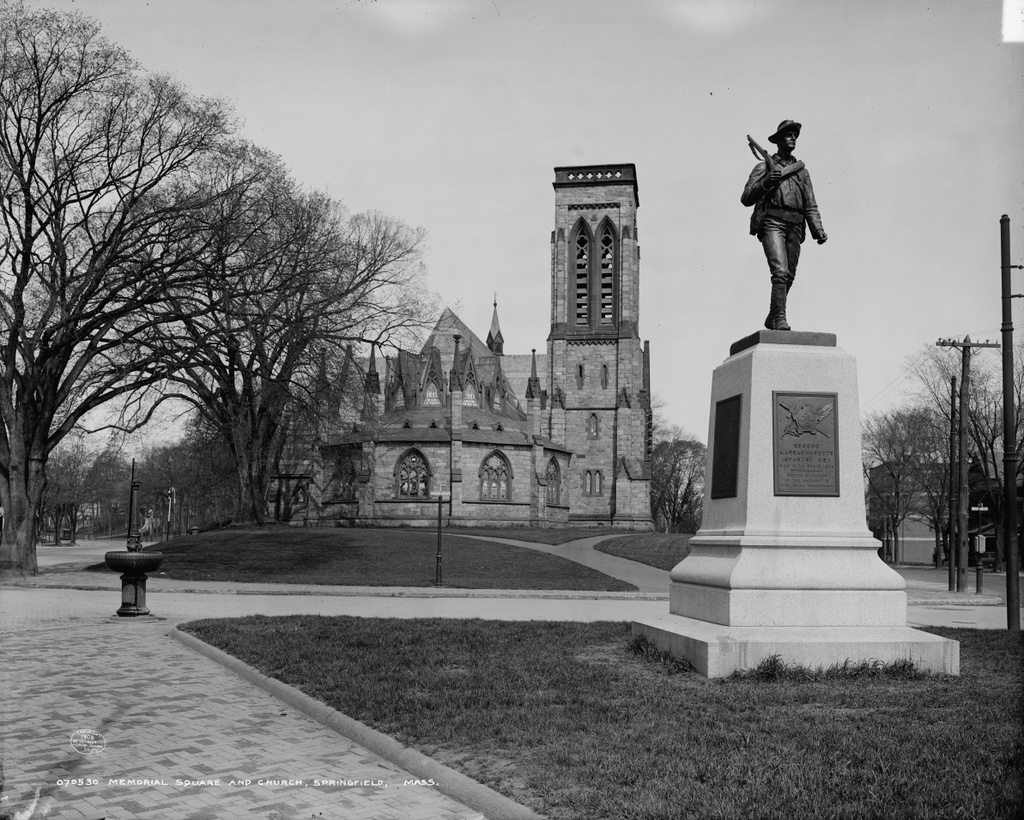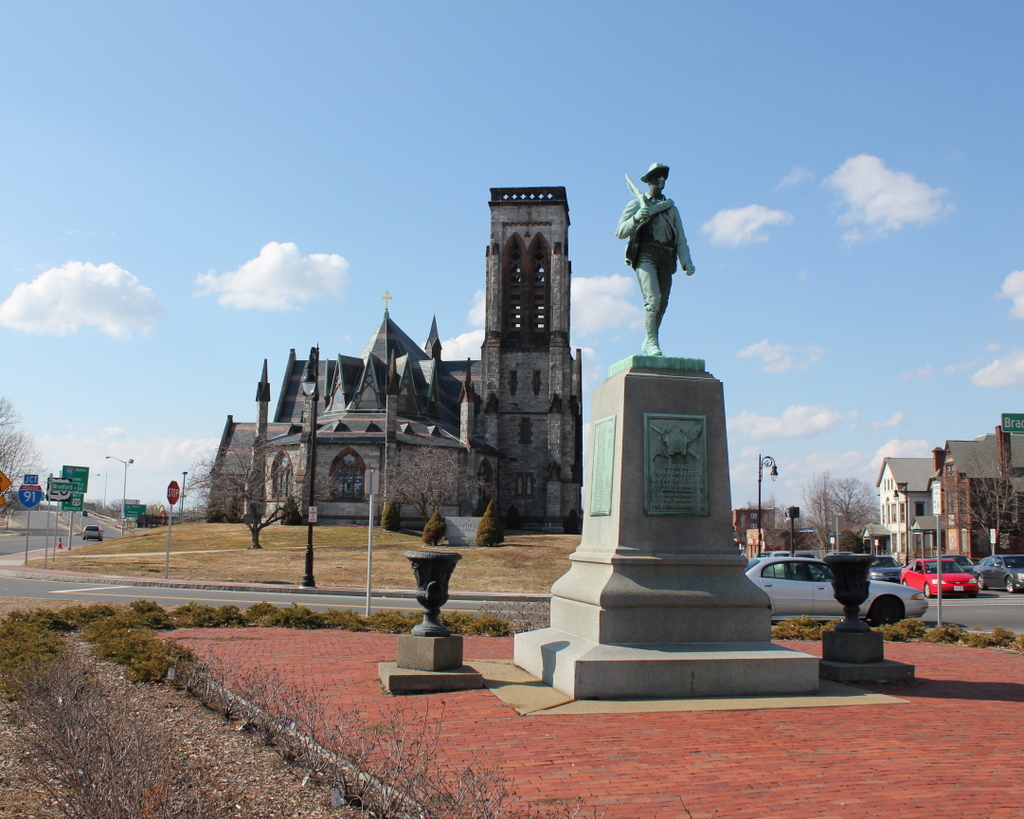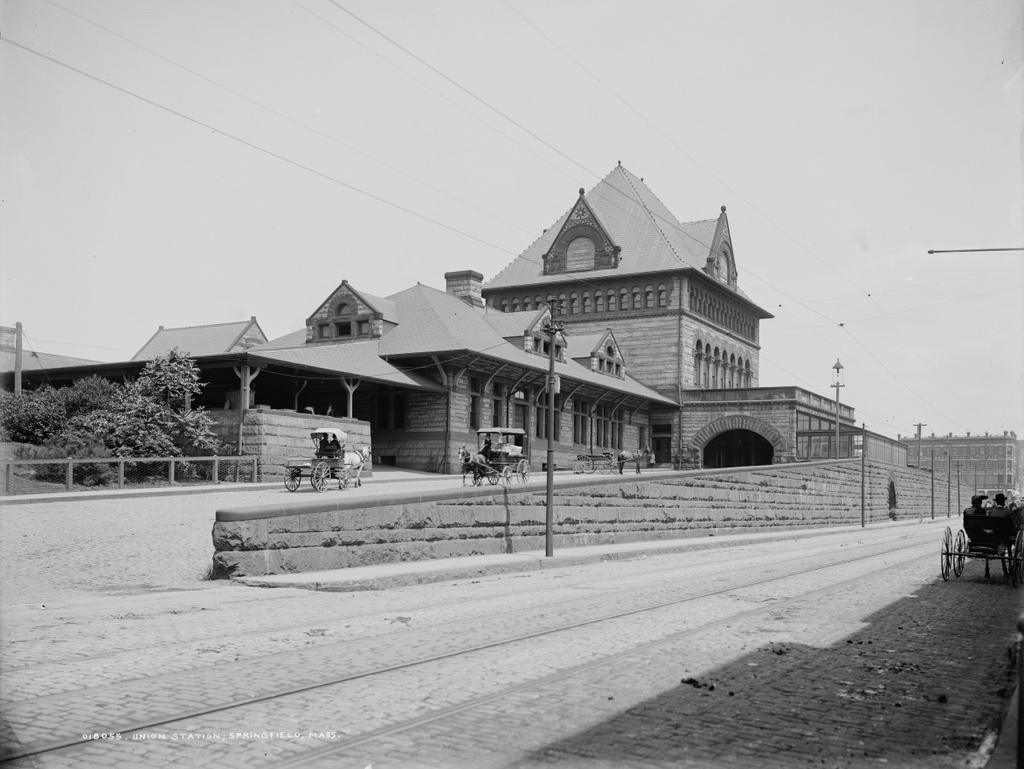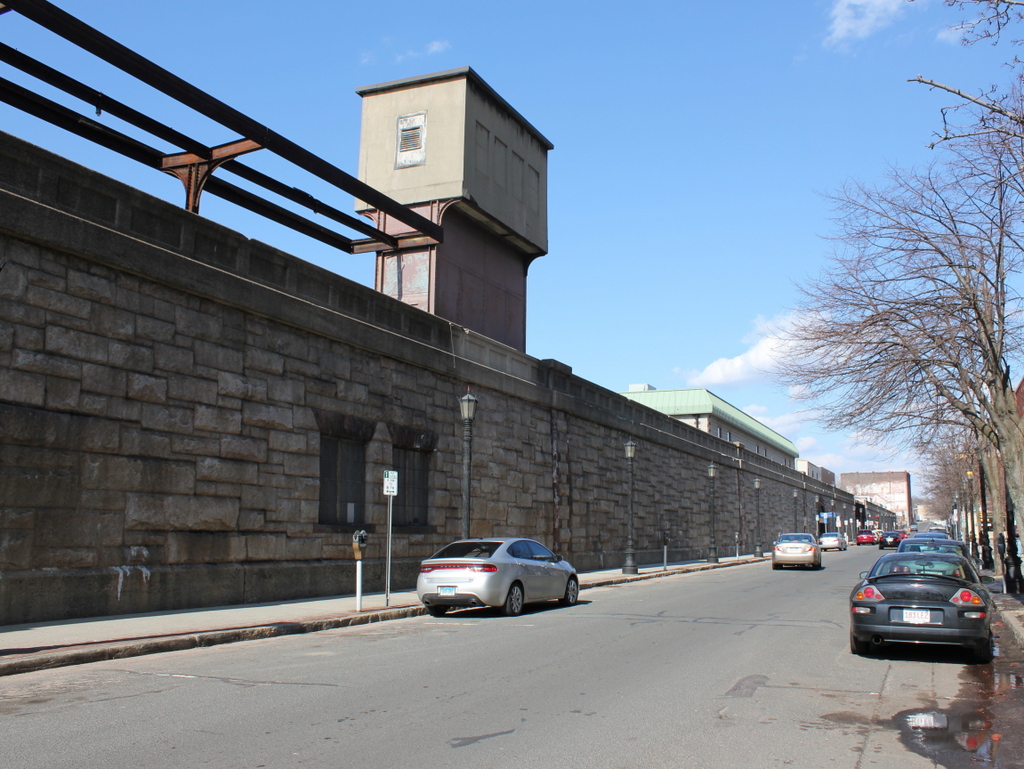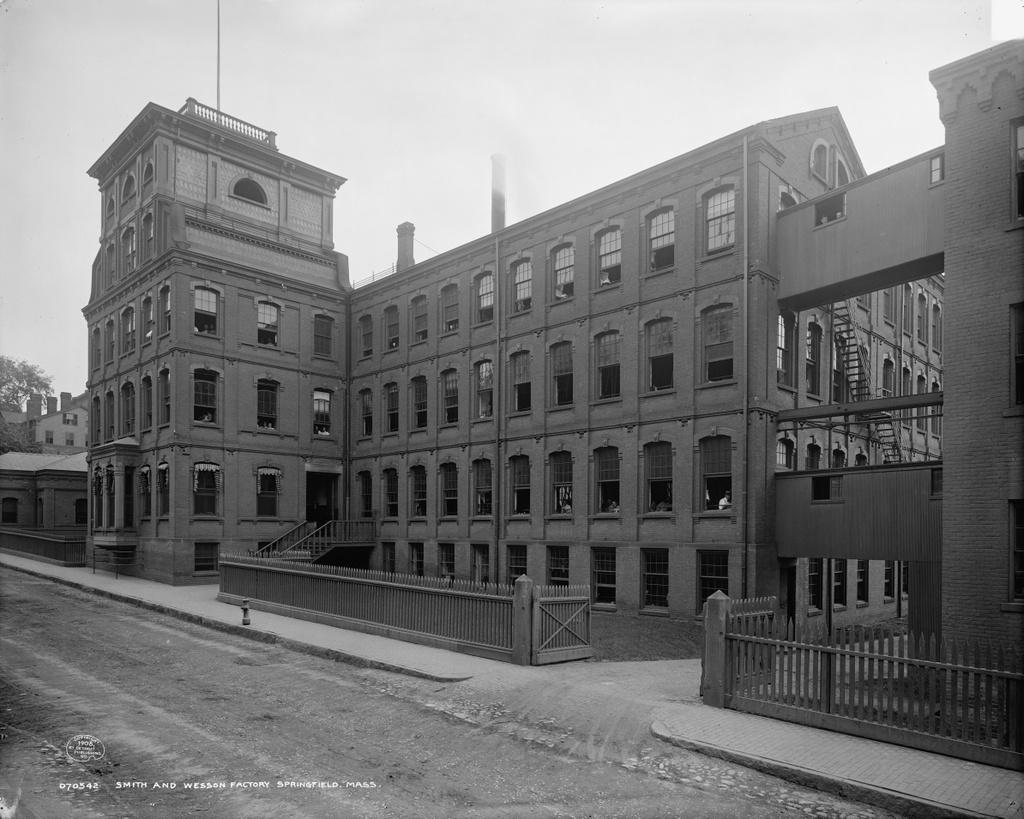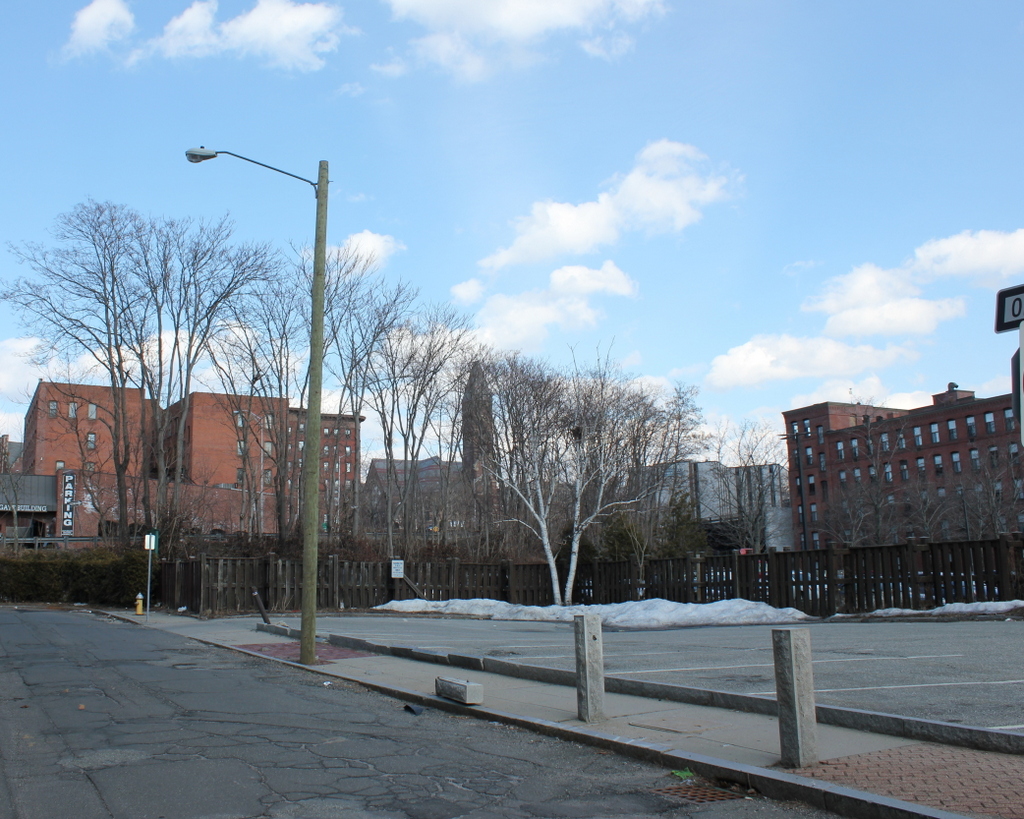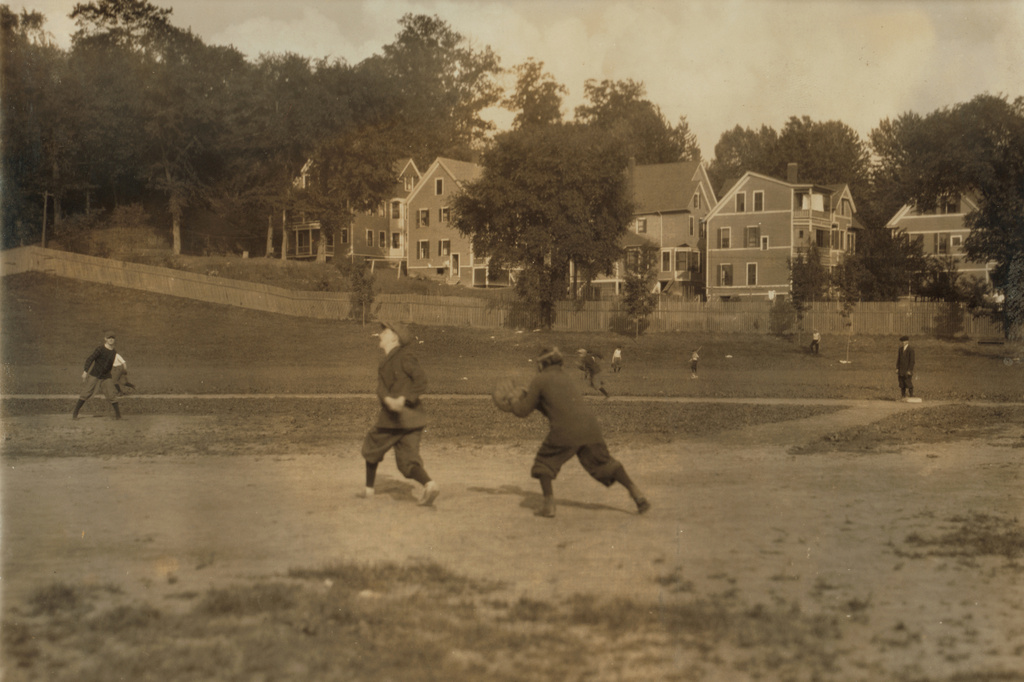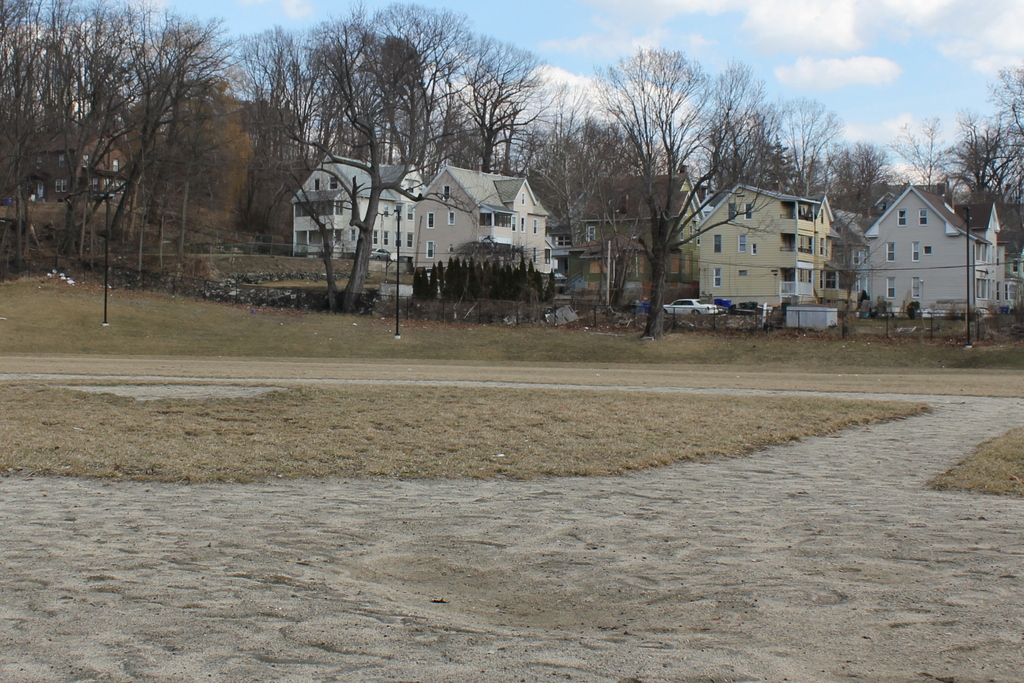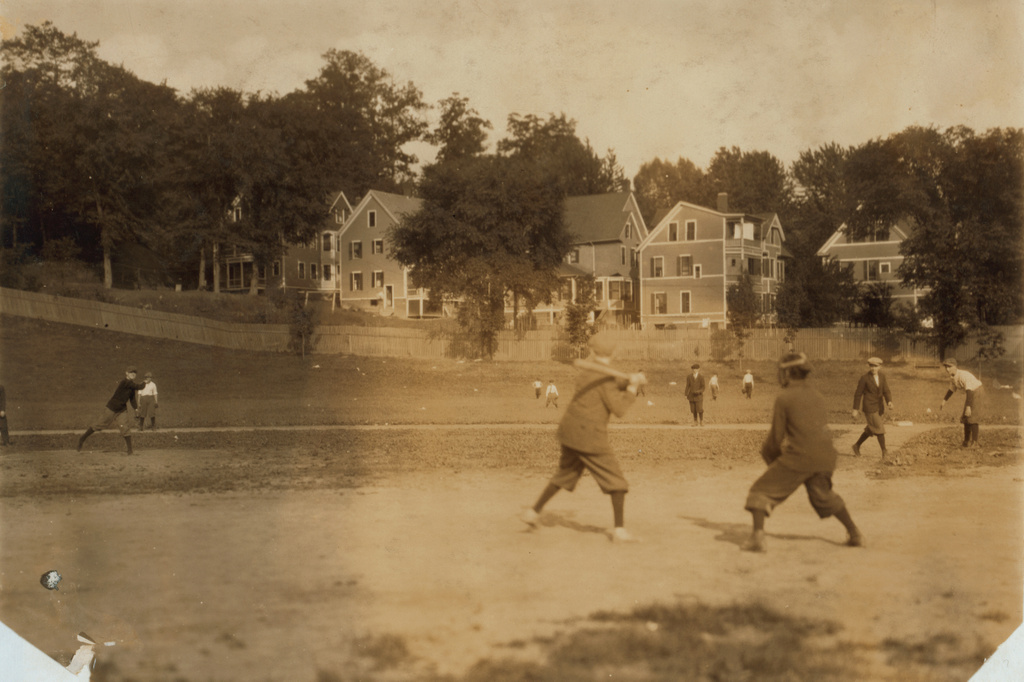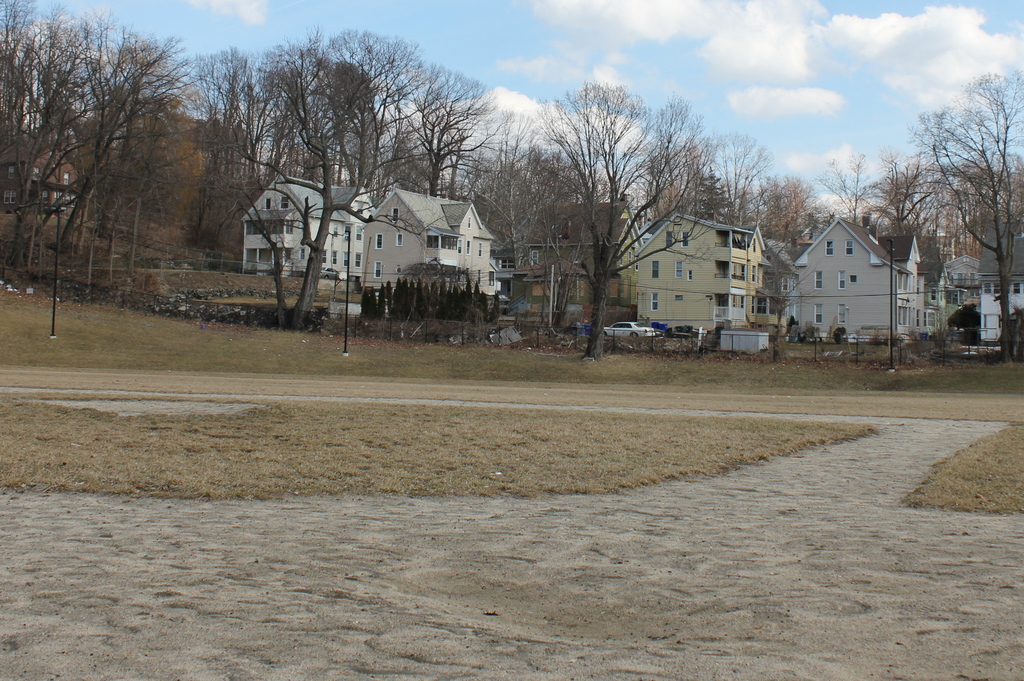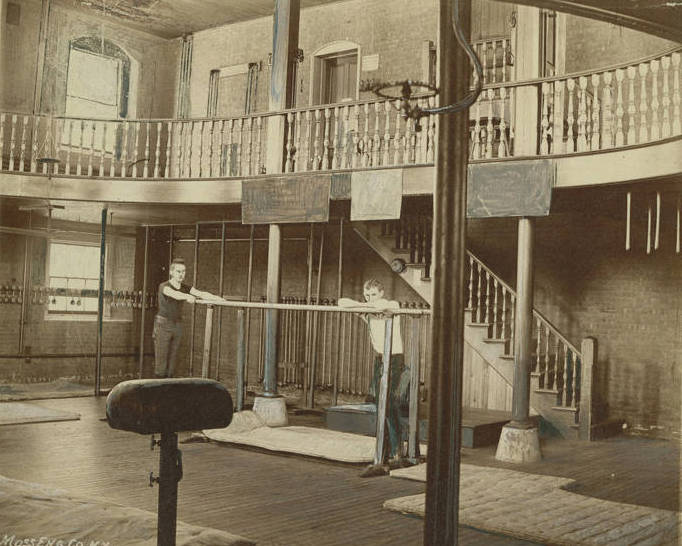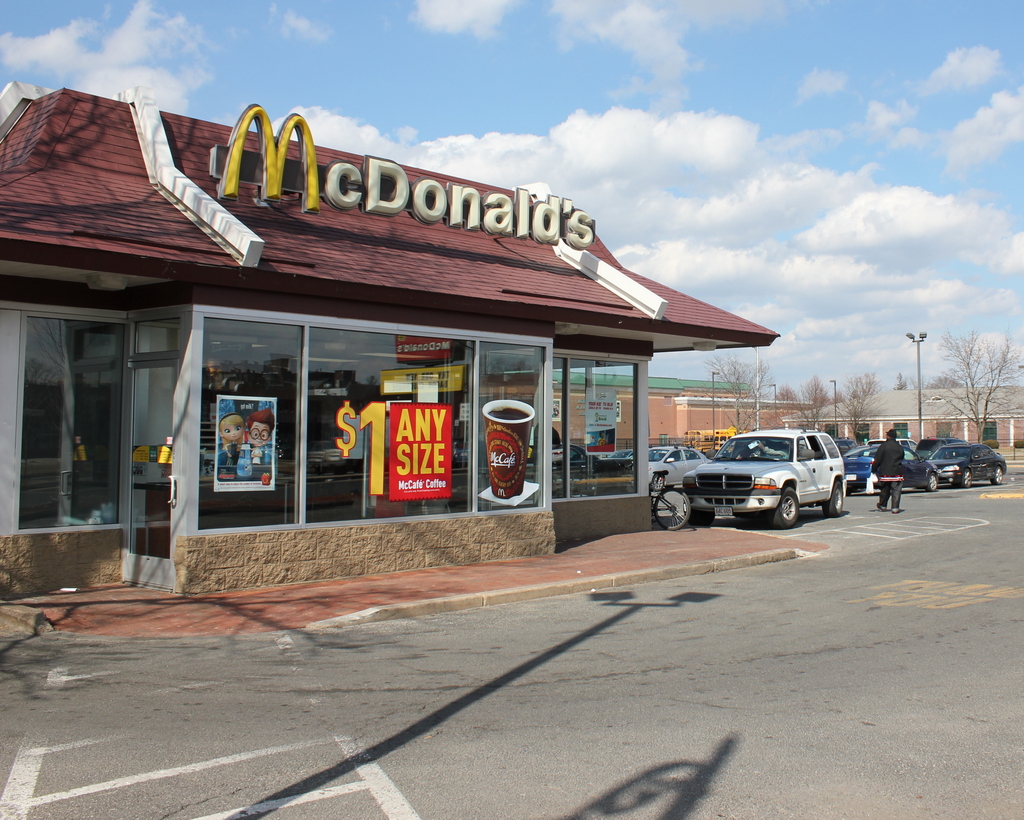Memorial Square and Memorial Congregational Church in Springfield, Mass., around 1908. Image courtesy of the Library of Congress, Detroit Publishing Company Collection.
The scene in 2014:
Built in 1869, the former Memorial Congregational Church has been home to St. George Greek Orthodox Church (now Cathedral) since 1940. In the foreground is a monument to Massachusetts veterans from the Spanish-American War. Neither the church nor the statue have changed much in appearance, although the quiet elm-lined streets have changed; Memorial Square is now the intersection of Routes 20 (left) and 116 (right), and the on-ramp for Interstate 91 is visible just beyond the church, on Route 20.

